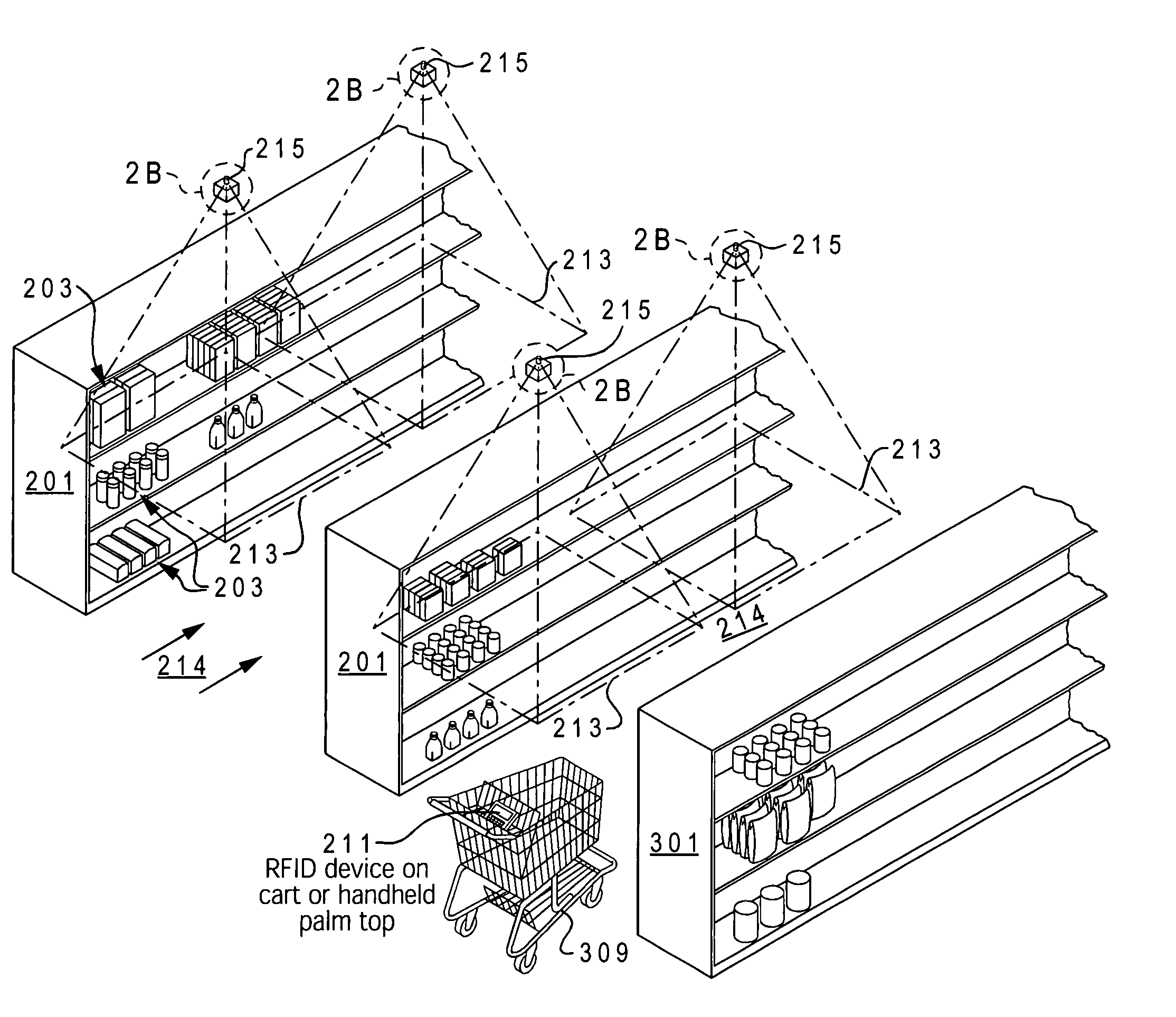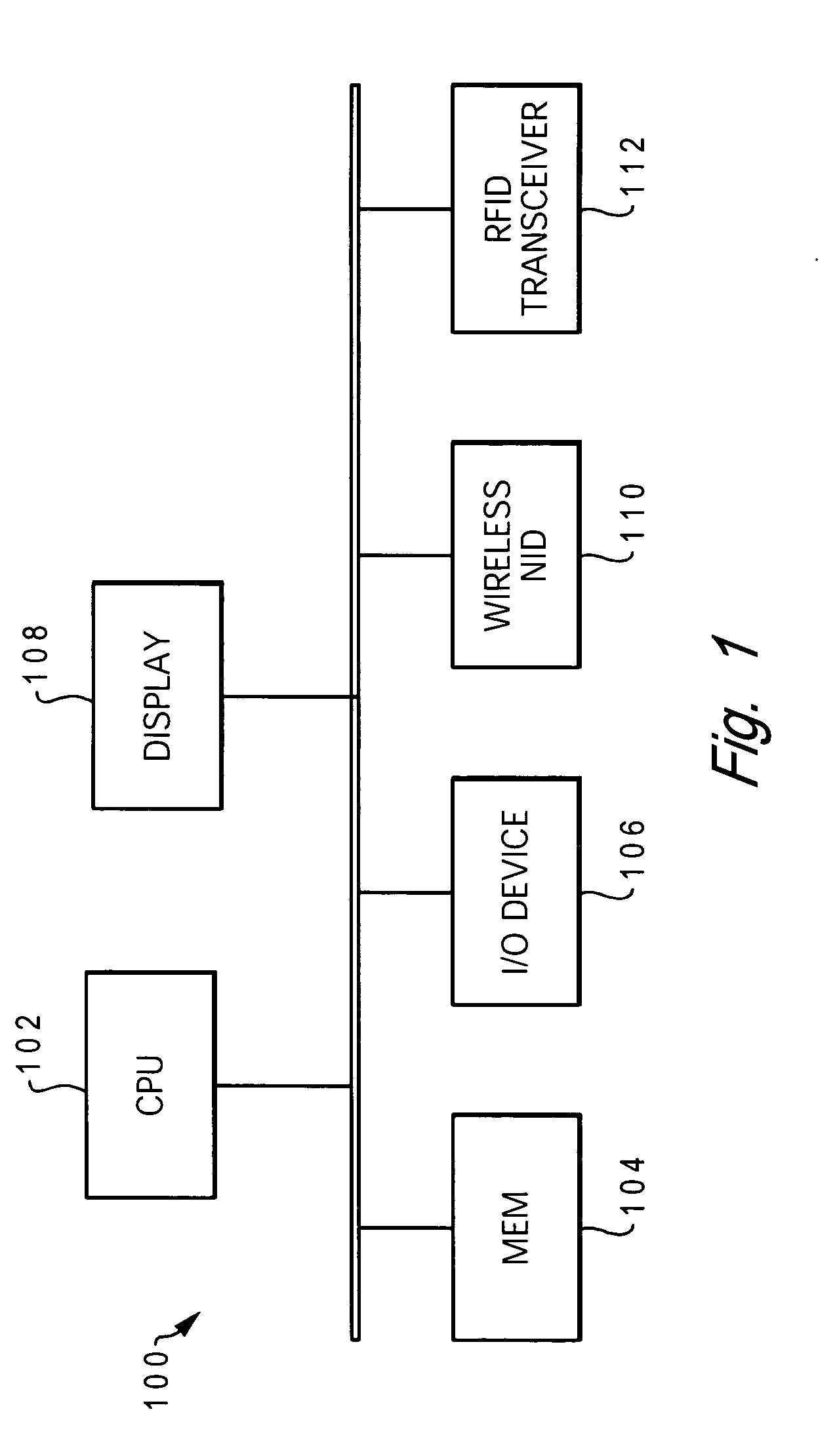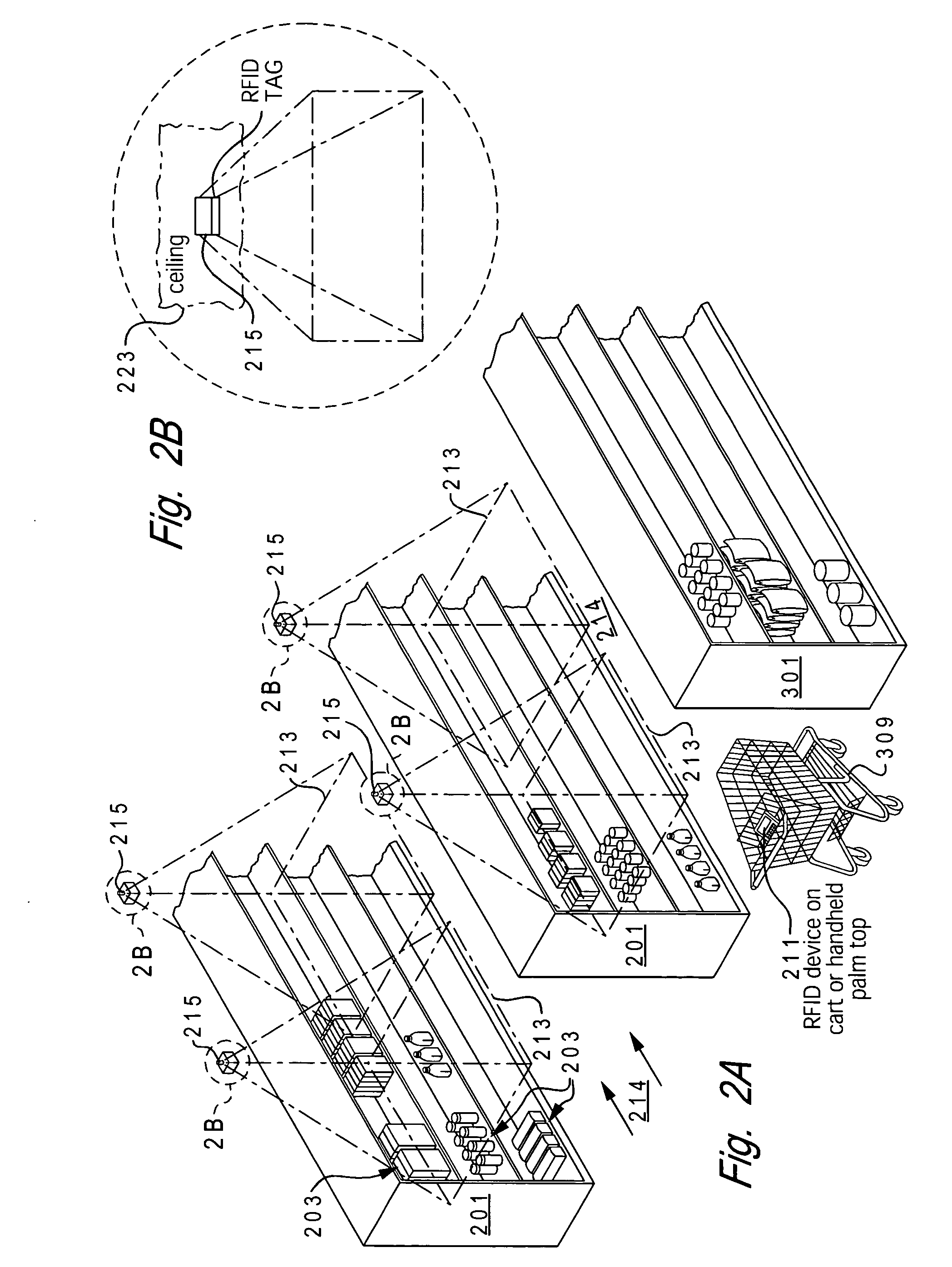Self-locating devices via highly directional RFID tags in controlled location
a self-locating device and highly directional technology, applied in the field of rfid technology, can solve the problems of large number of high-logic (active) devices, large amount of power consumption of each high-logic device, and large amount of processing errors, so as to increase the effective range of tags and reduce power consumption
- Summary
- Abstract
- Description
- Claims
- Application Information
AI Technical Summary
Benefits of technology
Problems solved by technology
Method used
Image
Examples
Embodiment Construction
[0024] The present invention provides a method and system for enabling cost-effective location sensing of a device via radio frequency (RF) technology in a monitored environment. A monitored area is provided multiple RFID tags placed at defined coordinates / location throughout the extended area. These RFID tags respond to receipt of a RF signal by transmitting / broadcasting their unique identifier (ID) within the specific area in which the tag is located. The broadcast may be directional based on a pre-set waveguide utilized when mounting the RFID tags.
[0025] In one implementation, the RFID tags are placed in a waveguide tuned to the tags operating frequency. Utilization of the waveguide also increases the tags effective range (directionally) and may reduce the amount of power required to interrogate the tag.
[0026] A device, whose location within the monitored area is desired to be known (or determined), is equipped with an RFID interrogating device, such as an RF transceiver, which...
PUM
 Login to View More
Login to View More Abstract
Description
Claims
Application Information
 Login to View More
Login to View More - R&D
- Intellectual Property
- Life Sciences
- Materials
- Tech Scout
- Unparalleled Data Quality
- Higher Quality Content
- 60% Fewer Hallucinations
Browse by: Latest US Patents, China's latest patents, Technical Efficacy Thesaurus, Application Domain, Technology Topic, Popular Technical Reports.
© 2025 PatSnap. All rights reserved.Legal|Privacy policy|Modern Slavery Act Transparency Statement|Sitemap|About US| Contact US: help@patsnap.com



